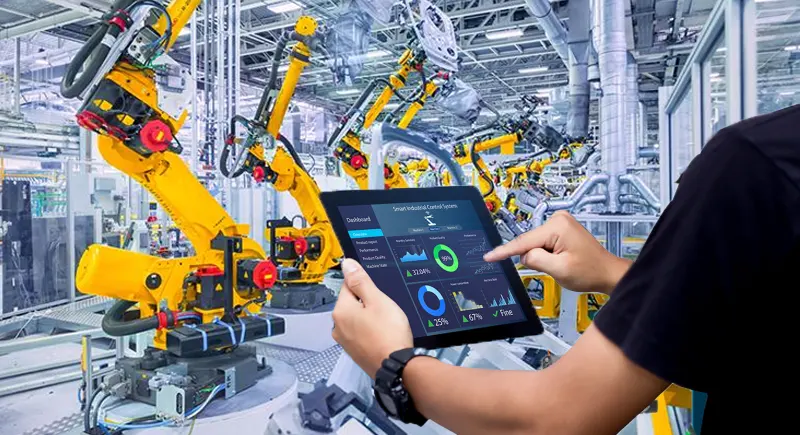Manufacturing is evolving at a rapid pace, with smart factories relying on automation to stay ahead. The secret behind this efficiency lies in control system integration, which connects machines, software, and processes to work seamlessly. This approach reduces downtime, improves accuracy, and enhances production speed like never before.
Connecting Machines and Software for Faster and Smarter Production
Modern factories no longer operate with isolated machines and manual inputs. Instead, they integrate smart control systems that allow machines to communicate directly with software, creating a seamless production flow. This integration eliminates bottlenecks caused by human intervention, ensuring that every stage of the process runs smoothly. With a centralized system, manufacturers can adjust settings, monitor performance, and optimize production without delays.
Control system integration also enables factories to handle complex tasks with greater efficiency. Sensors and automated feedback loops allow equipment to respond in real time, making adjustments based on production demands. The result is a highly coordinated system where machines work together, reducing idle time and maximizing output. With fewer disruptions and increased speed, factories can produce more goods with higher precision.
Reducing Human Errors with Automated Quality Checks in Real Time
Mistakes in manufacturing can lead to costly defects, wasted materials, and production slowdowns. By integrating automated quality control into smart factories, manufacturers significantly reduce human errors. Advanced sensors and machine vision technology scan products in real time, identifying defects before they become major issues. This proactive approach ensures that only high-quality products make it to the next stage of production.
Control system integration helps maintain consistent product quality across the entire assembly line. Automated systems can detect deviations in measurements, inconsistencies in materials, or assembly flaws within seconds. Once an issue is detected, the system can alert operators or even correct minor problems without human intervention. By minimizing human error, manufacturers save time, reduce waste, and improve overall product reliability.
Keeping Factories Running Smoothly with Predictive Maintenance Alerts
Unexpected equipment failures can bring an entire production line to a standstill, causing costly delays. Smart factories use predictive maintenance alerts to prevent these disruptions before they happen. Through control system integration, sensors continuously collect data on machine performance, detecting signs of wear and tear early. This allows maintenance teams to address issues before they lead to full breakdowns.
By monitoring real-time data, factories can schedule maintenance only when necessary, rather than relying on routine inspections that may be inefficient. Predictive maintenance not only extends the lifespan of machinery but also reduces repair costs. With fewer unplanned shutdowns, production stays on track, keeping operations smooth and efficient.
Speeding up Manufacturing by Letting Systems Communicate Instantly
Traditional manufacturing processes often suffer from delays caused by slow communication between different systems. With control system integration, smart factories eliminate these inefficiencies by allowing equipment, sensors, and software to share data instantly. Machines no longer wait for human input or manual adjustments—everything is automated for faster production.
This instant communication improves synchronization across the entire factory floor. Conveyor belts, robotic arms, and quality control systems work in harmony, reducing downtime and ensuring continuous production. The result is a manufacturing process that operates at peak efficiency, with minimal interruptions and faster turnaround times.
Cutting down Waste by Tracking Materials with Precision
Material waste is a major challenge in manufacturing, but smart factories address this issue by using advanced tracking systems. Control system integration allows real-time monitoring of raw materials, ensuring that every component is used efficiently. This precision tracking minimizes overuse, reduces scrap, and helps factories meet sustainability goals.
Automated inventory management ensures that materials are available when needed, preventing shortages or overstocking. By reducing unnecessary waste and optimizing resource use, manufacturers lower costs while maintaining high production efficiency. This smart approach not only benefits the bottom line but also contributes to more sustainable manufacturing practices.
Adjusting Production on the Fly with Real-time Data Insights
Manufacturing demands can change quickly, and factories need the flexibility to adapt. With control system integration, smart factories can adjust production levels instantly based on real-time data insights. If demand spikes or slows down, automated systems make immediate changes without requiring manual intervention.
This adaptability allows manufacturers to avoid overproduction and meet customer needs efficiently. Real-time data also helps identify performance trends, making it easier to optimize processes for long-term efficiency. By making adjustments on the fly, factories operate with maximum responsiveness, reducing waste and increasing profitability.
Improving Worker Safety by Automating High-risk Tasks
Factories often involve tasks that pose risks to human workers, such as handling heavy machinery, exposure to hazardous materials, or working in extreme environments. Control system integration enhances worker safety by automating these high-risk tasks, reducing the likelihood of injuries. Advanced robotics and automated systems take over dangerous operations, keeping workers out of harm’s way.
By minimizing direct human involvement in hazardous processes, factories create a safer working environment while maintaining high efficiency. Automated systems also ensure compliance with safety regulations by consistently monitoring conditions and preventing accidents. With fewer workplace injuries, manufacturers improve productivity while prioritizing worker well-being.

